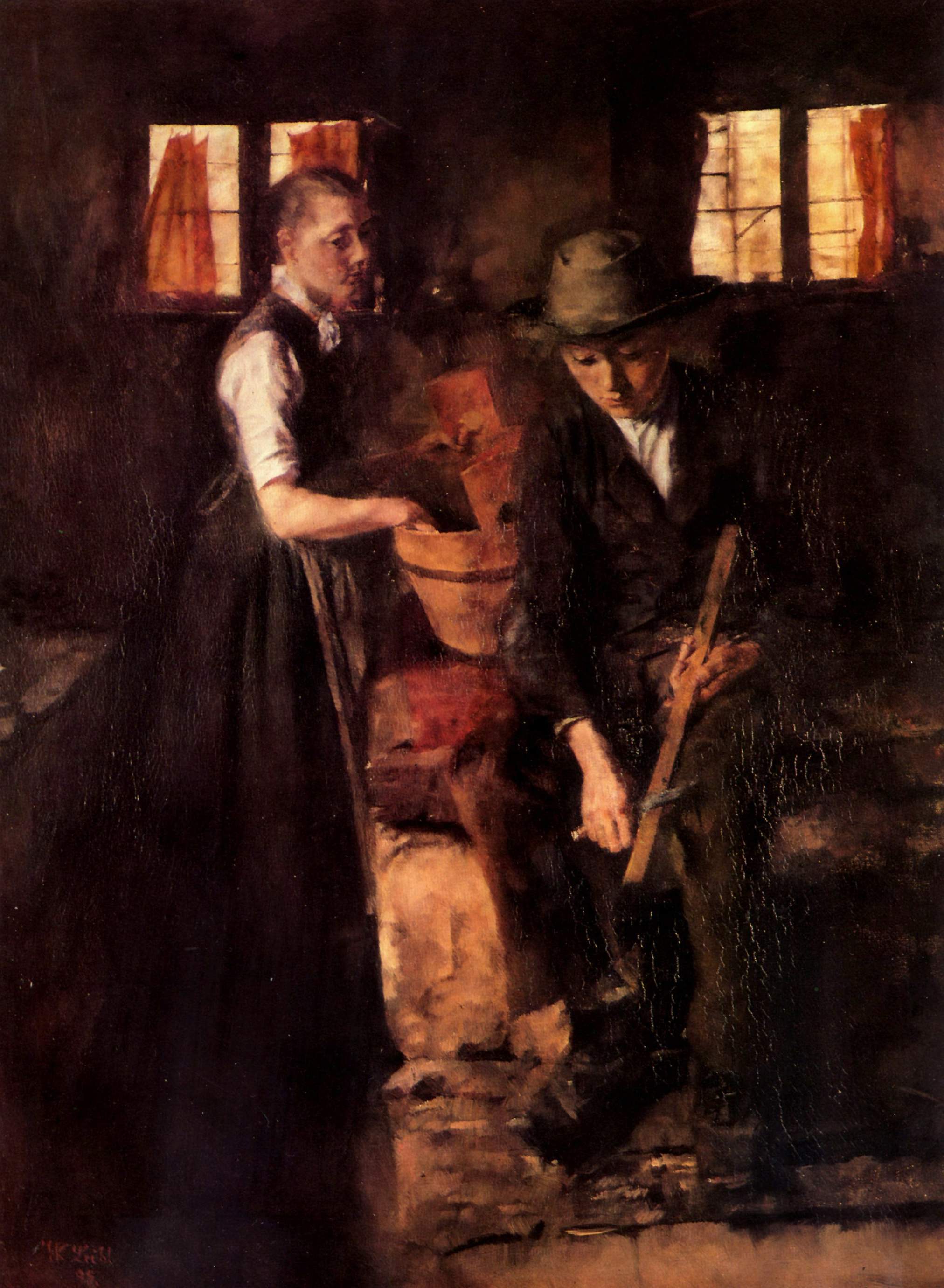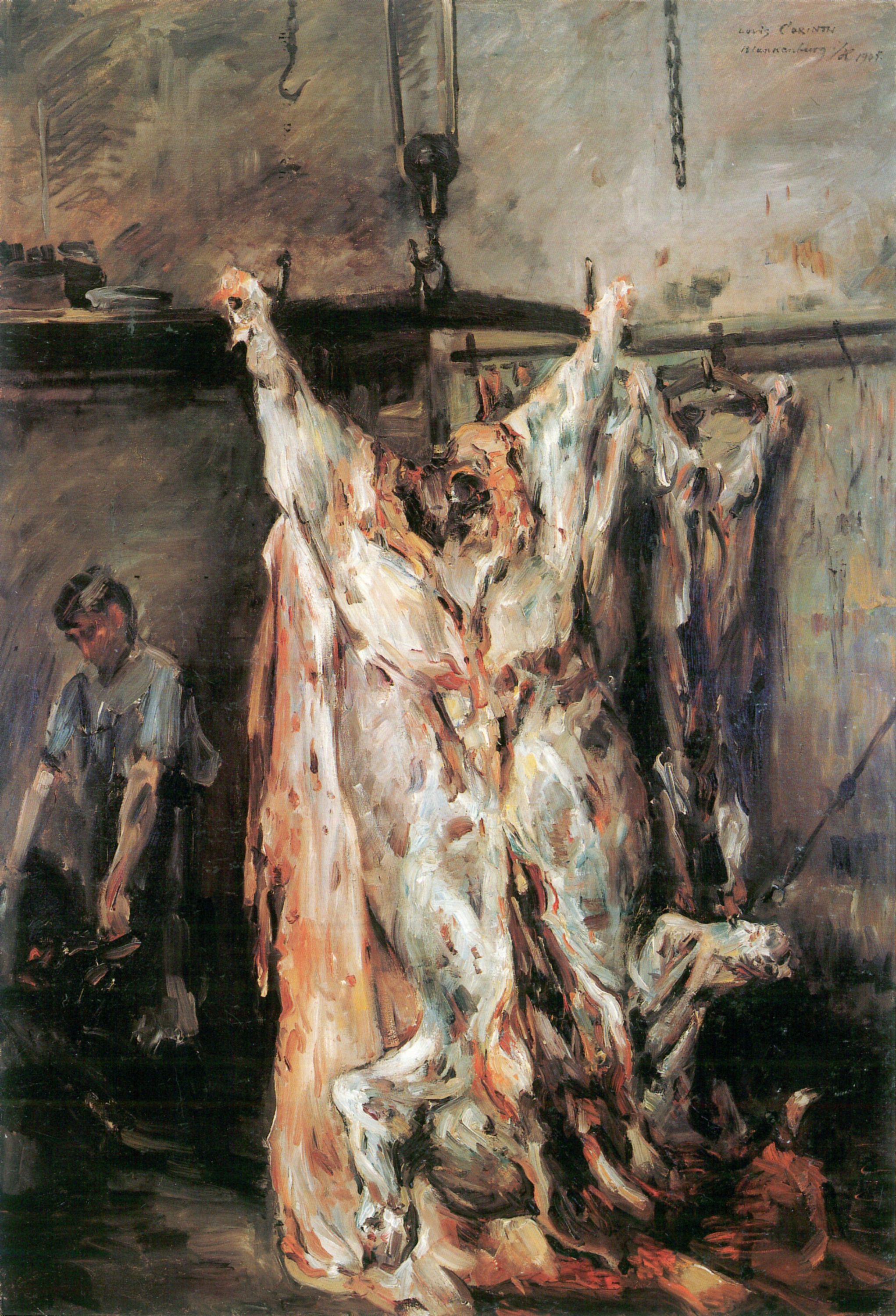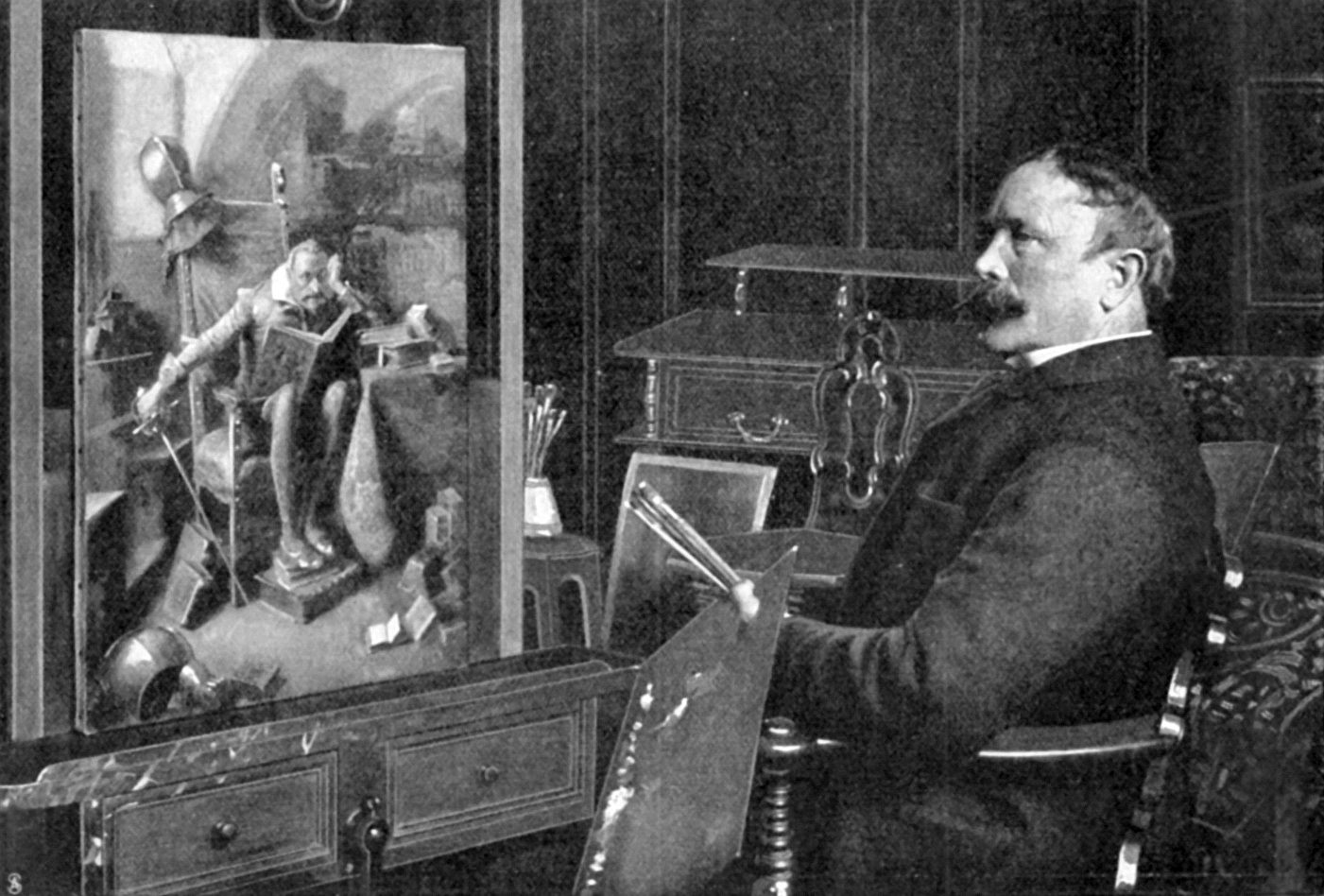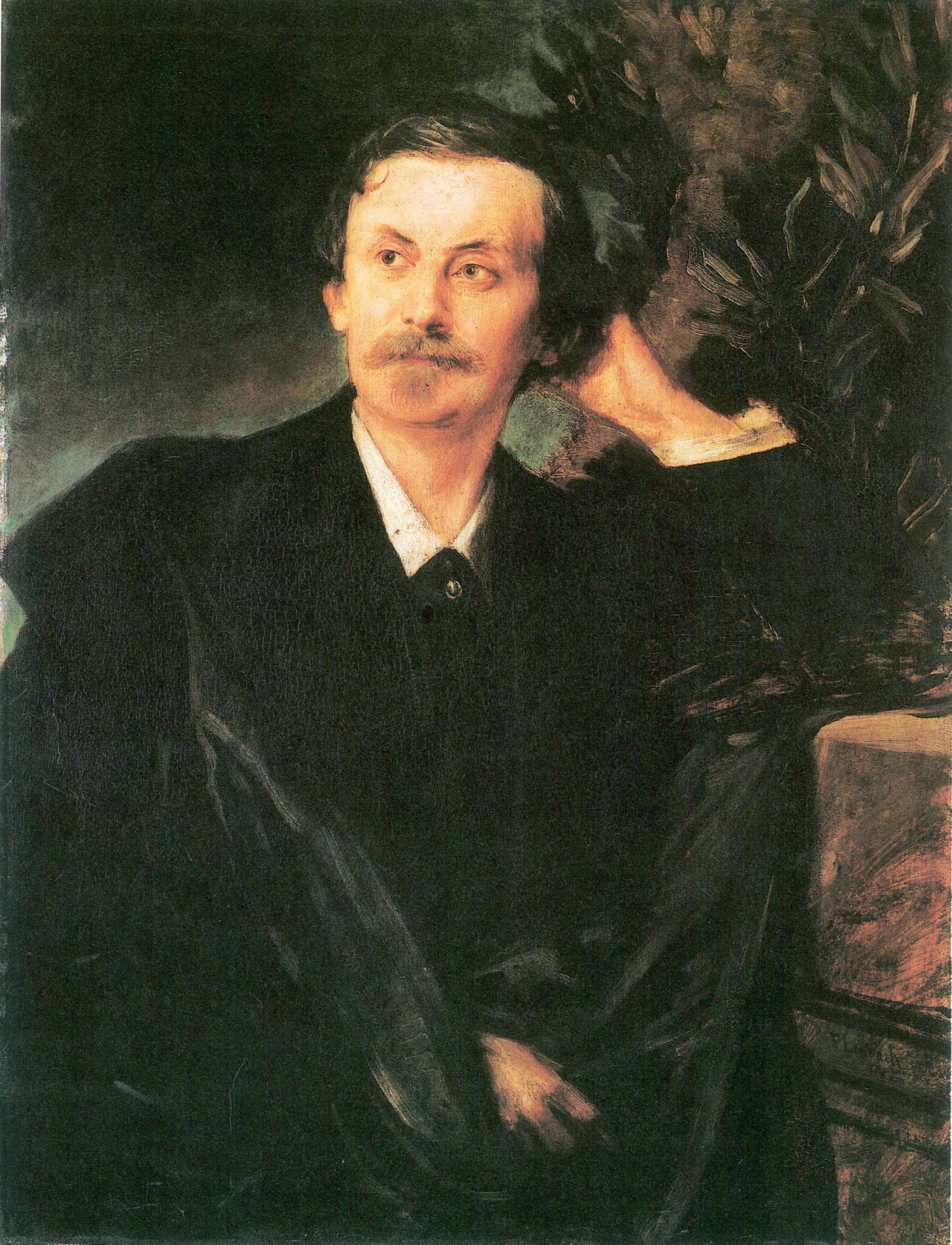|
Munich School
Munich School ( el, Σχολή του Μονάχου) is the name given to a group of painters who worked in Munich or were trained at the Royal Academy of Fine Arts of Munich (german: Münchner Akademie der Bildenden Künste) between 1850 and 1918. In the second half of the 19th century the Academy became one of the most important institutions in Europe for training artists and attracted students from across Europe and the United States. History and representative artists Munich was an important center of painting and visual art in the period between 1850 and 1914. The mid-century movement away from the Romanticism and emphasis on fresco painting of the earlier Munich school was led by Karl von Piloty, who was a professor at the Munich Academy from 1856 and became its director in 1874.Norman 1978, p. 167. Piloty's approach to history painting was influenced by the French academician Paul Delaroche, and by the painterly colorism of Rubens and the Venetians. Besides Piloty, oth ... [...More Info...] [...Related Items...] OR: [Wikipedia] [Google] [Baidu] |
Wilhelm Maria Hubertus Leibl 013
Wilhelm may refer to: People and fictional characters * William Charles John Pitcher, costume designer known professionally as "Wilhelm" * Wilhelm (name), a list of people and fictional characters with the given name or surname Other uses * Mount Wilhelm, the highest mountain in Papua New Guinea * Wilhelm Archipelago, Antarctica * Wilhelm (crater), a lunar crater See also * Wilhelm scream, a stock sound effect * SS Kaiser Wilhelm II, SS ''Kaiser Wilhelm II'', or USS ''Agamemnon'', a German steam ship * Wilhelmus, the Dutch national anthem {{Disambiguation ... [...More Info...] [...Related Items...] OR: [Wikipedia] [Google] [Baidu] |
Alfred Kowalski
Alfred Jan Maksymilian Kowalski (Alfred ''Wierusz''-Kowalski; 11 October 184916 February 1915) was a Polish painter and representative of the Munich School. Life He was born on 11 October 1849 in Suwałki to father Teofil Kowalski of the Wieruszowa Coat of Arms and mother Teofilia (née Siewierska). Wierusz-Kowalski settled in Munich in 1876 after studies in Warsaw, Prague, and Dresden. He studied for a year at the Munich Academy of Fine Arts, and worked under Józef Brandt and Alexander von Wagner. In 1890 he was nominated as an honorary professor of the Munich Academy. He was the most popular Polish painter in Munich, alongside Józef Brandt. His paintings received medals at numerous art exhibitions and were sought-after by collectors and German art dealers. He painted landscapes, generic and historical scenes. After his journey to Africa in 1903 he also undertook oriental themes. His works were sold mostly on the German market and many of them ended in private collections in ... [...More Info...] [...Related Items...] OR: [Wikipedia] [Google] [Baidu] |
Lovis Corinth
Lovis Corinth (21 July 1858 – 17 July 1925) was a German artist and writer whose mature work as a painter and printmaker realized a synthesis of impressionism and expressionism. Corinth studied in Paris and Munich, joined the Berlin Secession group, later succeeding Max Liebermann as the group's president. His early work was naturalistic in approach. Corinth was initially antagonistic towards the expressionist movement, but after a stroke in 1911 his style loosened and took on many expressionistic qualities. His use of color became more vibrant, and he created portraits and landscapes of extraordinary vitality and power. Corinth's subject matter also included nudes and biblical scenes. Early life Corinth was born Franz Heinrich Louis on 21 July 1858 in Tapiau, in the Province of Prussia in the Kingdom of Prussia. The son of a tanner, he displayed a talent for drawing as a child. In 1876 he went to study painting in the academy of Königsberg. Initially intending to be ... [...More Info...] [...Related Items...] OR: [Wikipedia] [Google] [Baidu] |
Miroslav Kraljević
Miroslav Kraljević (14 December 1885 – 16 April 1913) was a Croatian painter, printmaker and sculptor, active in the early part of the 20th century. He is one of the founders of modern art in Croatia. Kraljević studied painting in Vienna and Munich at the prestigious Academy of Arts along with Oskar Herman, Vladimir Becić and Josip Račić. This group of Croatian artists were later called the Munich Circle, known for their influence on modern art in Croatia. After Munich, Kraljević spent time in the family home at Požega, and then in Paris where he produced his best work. He died in Zagreb in April 1913, aged 27, from tuberculosis. Miroslav Kraljević painted in many different styles, including Impressionism, Pointillism and Expressionism. He also became known for his drawings of grotesque or erotic characters, in a similar way to Aubrey Beardsley, and for his sculptures. Working in a variety of media, he used almost every painting and drawing technique in his portra ... [...More Info...] [...Related Items...] OR: [Wikipedia] [Google] [Baidu] |
Hermann Von Kaulbach
Hermann von Kaulbach (26 July 1846 in Munich – 9 December 1909 in Munich) was a German painter of the Munich School. Life Kaulbach was the son of painter Wilhelm von Kaulbach. He was originally a medical student at the Ludwig Maximilian University of Munich but, perhaps inspired by his father, quit school to study painting instead. In 1867, he became a student of Karl von Piloty. Under his influence, Kaulbach devoted himself almost entirely to historical themes. Ultimately though, he became best known for his portraits of children. He made two study trips to Rome, in 1880 and 1891. In 1886, he was appointed a Professor of History Painting at the Academy of Fine Arts Munich. In 1906 he published a picture book, with children as the motif, that sold 135,000 copies. He was married to Sophie Schroll, the daughter of an engraver, and they had three children.Gertrude Quast-Benesch: ''Anton Bruckner in München''. Hrsg.: Anton-Bruckner-Institut Linz. H. Schneider, 2006, , S. ... [...More Info...] [...Related Items...] OR: [Wikipedia] [Google] [Baidu] |
Eduard Von Grützner
Eduard Theodor Ritter von Grützner (May 26, 1846 – April 2, 1925) was a German painter and professor of art. He was especially noted for his genre paintings of monks. He also repeatedly portrayed Falstaff. Childhood Grützner was born in 1846 into a noble family in Groß-Karlowitz near Neisse, Upper Silesia, Prussia (now Poland). His father was a prominent member of the church, and the local pastor often visited his parents' home. He recognized Eduard's talent and inclination for painting early on. The administrator of a ducal country house in the neighborhood got him paper, and eventually the pastor gained him entrance to the ''Gymnasium'' (a university preparatory school) of Neisse. Studies In 1864, the pastor brought Grützner to the private school of Hermann Dyck in Munich for art education, though his tenure at the Kunstgewerbeschule under Dyck was of short duration. In the first semester he transferred to the Classical Art class of Johann Georg Hiltensperge ... [...More Info...] [...Related Items...] OR: [Wikipedia] [Google] [Baidu] |
Franz Defregger
Franz Defregger (after 1883 Franz von Defregger) (30 April 1835 – 2 January 1921) was an Austrian artist known for producing genre art and history paintings set in his native county of Tyrol. Biography Franz Defregger was born on 30 April 1835 at the Ederhof in Stronach, Tyrol in the Austrian Empire. He was the second son of Maria (née Fercher) and Michael Defregger, a farmer, who also had five daughters. His mother and two of his sisters died in 1841 during a typhoid epidemic. Franz himself nearly died from the fever. During his early years, Franz developed a strong love of music, and learned to play the flugelhorn. He soon became a member of a local band in Dölsach, playing at weddings, assemblies, and balls. Franz also displayed an early talent for drawing and woodcarving, which he developed autodidactically while working on his father's farm. After his father died in 1858, Franz took over the farm at the age of twenty-three. Within two years, however, he sold the ... [...More Info...] [...Related Items...] OR: [Wikipedia] [Google] [Baidu] |
Wilhelm Trübner
Wilhelm Trübner (February 3, 1851 – December 21, 1917) was a German realist painter of the circle of Wilhelm Leibl. Biography Trübner was born in Heidelberg. He was the third son of a silver- and goldsmith, Johann Georg Trübner, and his wife Anna Maria.Bahns et al. 1994, p. 73. In 1867 he began training as a goldsmith in Hanau, and met classicist painter Anselm Feuerbach who encouraged him to study painting. In that year he began studies at the Kunstschule in Karlsruhe under Karl Friedrich Schick. He was influenced by artists he met in Karlsruhe, such as Hans Canon and Feodor Dietz.Ruhmer, E. (2003, January 01). "Trübner, (Heinrich) Wilhelm". Grove Art Online. In 1869 he began studying at the Kunstacademie in Munich, where he was greatly impressed by an international exhibition of paintings by Leibl and Gustave Courbet. Courbet visited Munich in 1869, not only exhibiting his work but demonstrating his alla prima method of working quickly from nature in public perform ... [...More Info...] [...Related Items...] OR: [Wikipedia] [Google] [Baidu] |
Wilhelm Leibl
Wilhelm Maria Hubertus Leibl (October 23, 1844 – December 4, 1900) was a German realist painter of portraits and scenes of peasant life. Biography Leibl was born in Cologne, where his father was the director of the Cathedral choir. He was apprenticed to a locksmith before beginning his artistic training with the local painter Hermann Becker in 1861. He entered the Munich Academy in 1864, subsequently studying with several artists including Carl Theodor von Piloty. He set up a group studio in 1869, with Johann Sperl, Theodor Alt, and Rudolf Hirth du Frênes. At about the same time, Gustave Courbet visited Munich to exhibit his work, making a considerable impression on many of the local artists by his demonstrations of alla prima painting directly from nature. Leibl's paintings, which already reflected his admiration for the Dutch old masters, became looser in style, their subjects rendered with thickly brushed paint against dark backgrounds. Career In 1869, following Cour ... [...More Info...] [...Related Items...] OR: [Wikipedia] [Google] [Baidu] |
Friedrich Kaulbach
Theodor Friedrich Wilhelm Christian Kaulbach (8 July 1822 – 17 September 1903) was a German painter from Bad Arolsen, Principality of Waldeck and Pyrmont. His father was Christian Kaulbach (1777–1847), a cabinet maker in Arolsen. He was also the cousin and at one time the student of the painter Wilhelm von Kaulbach, son of Philipp Karl Friedrich v. Kaulbach (1775–1846), goldsmith and amateur painter. Early years After a visit to Venice in 1844, he and his uncle parted ways. He painted independently until 1848, when he executed the painting ''Adam and Eve beside the body of Abel.'' This led to a call to a professorship at the Academy of Fine Arts, Munich, which he declined. In 1850 he traveled to Paris, where he produced historical paintings, and supported himself through portraiture. In 1850, Maximilian II of Bavaria commissioned him to paint the Coronation of Charlemagne for the Museum Maximilianeum. The picture was completed in 1861. Establishment as ... [...More Info...] [...Related Items...] OR: [Wikipedia] [Google] [Baidu] |
Franz Von Lenbach
Franz Seraph Lenbach, after 1882, Ritter von Lenbach (13 December 1836 – 6 May 1904), was a German painter known primarily for his portraits of prominent personalities from the nobility, the arts, and industry. Because of his standing in society, he was often referred to as the "Malerfürst" (Painter Prince). Biography His father, who originally came from South Tyrol where the family name was spelled "Lempach", was a Master Mason for Schrobenhausen, where Lenbach was born. Lenbach completed his primary education at Landsberg in 1848, then attended a business school in Landshut. From 1851 to 1852, he was apprenticed to the sculptor Anselm Sickinger in Munich. At that time, his father died and he went home to help in the family business. He was only there a short time before beginning studies at the Augsburg University of Applied Sciences. While there, he drew and painted in his spare time, befriended Johann Baptist Hofner (1832–1913), the animal painter, and decided to beco ... [...More Info...] [...Related Items...] OR: [Wikipedia] [Google] [Baidu] |
Fritz Osswald
Fritz Osswald (23 June 1878 – 24 August 1966) was a Swiss painter, member of the Munich Secession and of the Darmstadt Artists' Colony. Biography Fritz Osswald was born in Hottingen (Zürich) on 23 June 1878. The son of sculptor Albert Osswald, he spent his childhood between Zurich and Winterthur, where he attended primary school; after a few years in a boarding school in French-speaking Switzerland, he enrolled at the art institutes of Zurich and Munich. In 1897, Osswald frequented courses by Wilhelm von Diez and Nikolaos Gyzis at the Academy of Fine Arts in Munich, and was awarded two medals of honour. From 1904, he was represented in Munich’s Secession exhibitions, where he encountered outstanding success, selling his first works to museums. Appreciated as an emerging artist – and compared by critics to well-established names – Osswald married in 1907 Elsbeth Leopold, who gave birth to their daughter Agnes Hildegard, known as Hilla, in May of the following year. The a ... [...More Info...] [...Related Items...] OR: [Wikipedia] [Google] [Baidu] |







